NymphCC for Dreadbox Nymphes
IMPORTANT INFORMATION
Introduction
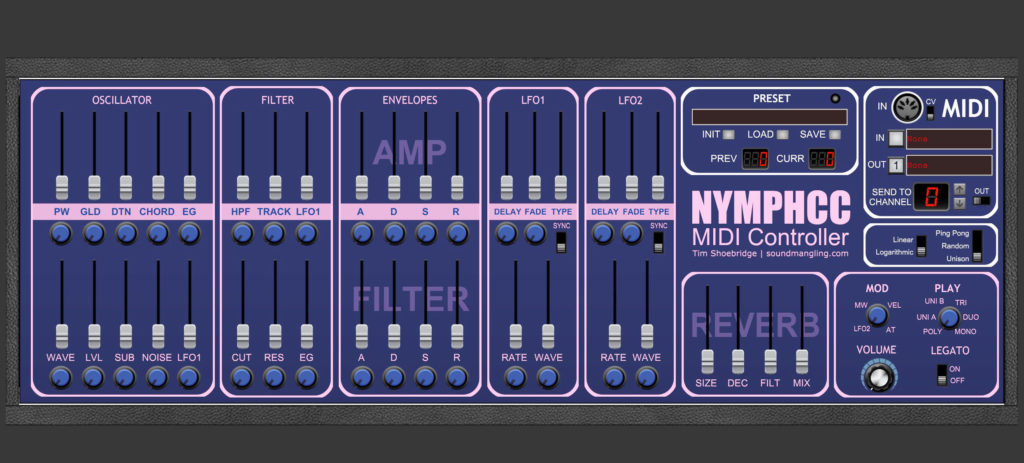
NymphCC is a software MIDI Controller designed specifically to control the Dreadbox Nymphes 6 voice analogue synthesiser. You can control all the synthesis parameters of the Nymphes directly, as well as save and load settings on your computer. You can also polychain two Nymphes synths together for a maximum of 12 notes of polyphony.
Walk-through
For an overview of NymphCC and to understand its main functions, it is strongly recommended that you watch the following walk-through video:
Availability
This software tool is distributed as a module for Cherry Audio’s Voltage Modular product. Voltage Modular runs on Windows and Apple Mac, both as a standalone application and as a VST plugin for your DAW. Modules can be purchased and downloaded using Voltage Modular’s online store. Voltage Modular itself is completely free to download. Please check out Cherry Audio’s website for more information here.
User Guide
Main Sliders
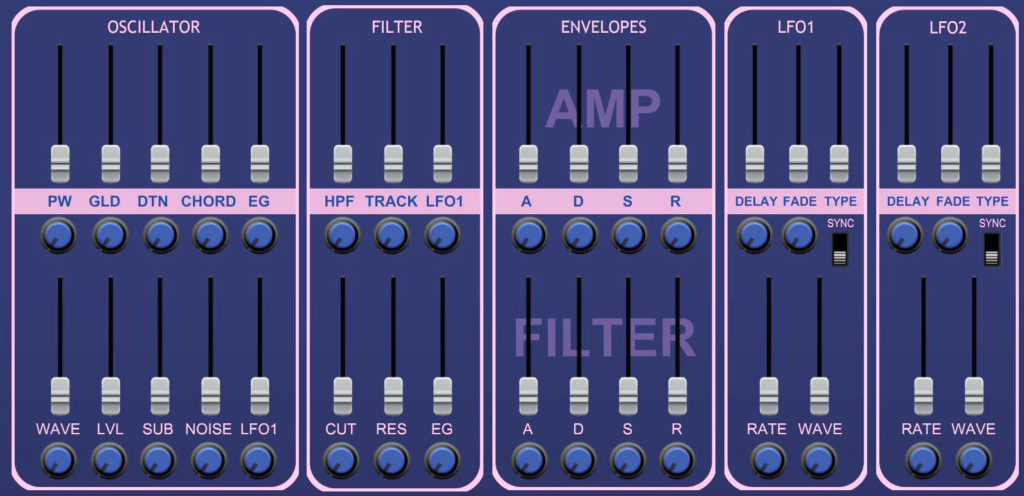
Use these sliders to control the Nymphes’ main sound-sculpting parameters. These sliders correspond to the main sliders accessible on the front panel of the Nymphes, either directly or in conjunction with the SHIFT button. In addition, a set of dedicated sliders are provided for LFO2 which, on the Nymphes, are only accessible via a menu option.
The blue rotary dials beneath the sliders control the amount by which the given sound parameter is modulated by one or more of the global modulation sources. You can select one modulation source at a time, this is done in the Master Control section (described below).
Reverb Sliders
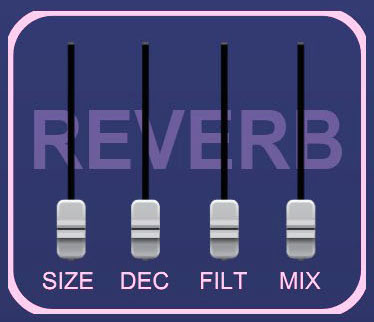
Use these sliders to control the Nymphes’ digital reverb effect. These sliders correspond with controls on the Nymphes that are only accessible via a menu option. Note that none of these parameters can be modulated by a global modulation source, however you can modulate them from within Voltage Modular by purchasing the NymphCV CV Expansion module which is sold separately.
Master Controls
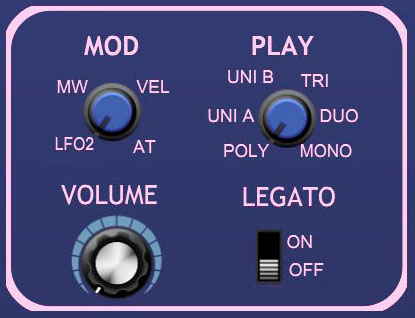
There are four controls which affect the overall patch created in the Nymphes:
MOD – Use this control to select a global modulation source, the rotary controls under many of the sliders will now define a modulation amount for the given modulation source.
PLAY – Use this control to select the Nymphes’ play mode, ranging from 6-voice polyphonic to single voice monophonic.
VOLUME – This control affects the overall volume of the patch and equates to the volume knob on the front panel of the Nymphes. You can modulate this volume control from within Voltage Modular if you purchase the NymphCV CV Expander module which is sold separately.
LEGATO – This switch turns legato mode on or off. Legato mode on the Nymphes affects the filter envelope and whether it triggers on every note or only the first note to be held down. Legato is only effective with unison and monophonic play modes.
Preset Controls
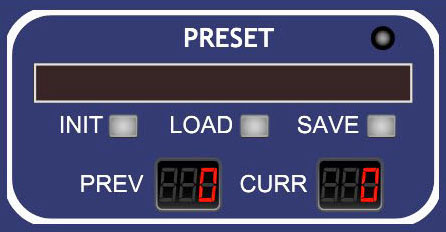
You can save and load the state of the controls in NymphCC to files stored on your computer. This allows you to organise presets into folders, name them how you want, and to share them with others. These presets are specific to NymphCC and have no connection at all to the presets that you can store inside banks within the Nymphes’ own memory.
INIT – Initialises all controls and sliders to a “default” position, representing a basic sawtooth with no filter or envelopes or other modulations applied.
LOAD – Load a preset file from local computer storage.
SAVE – Save the current state of the controls in NymphCC to a file of your choice on your computer. The contents of the file and its internal format are proprietary to NymphCC, the file extension is .NYM.
MIDI
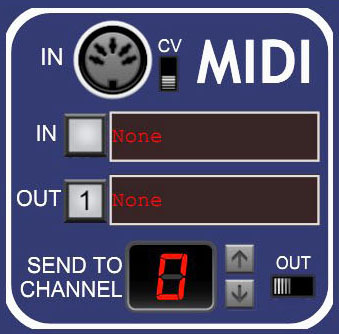
These controls allow you to connect NymphCC both to your Nymphes synthesiser but also to MIDI controllers such as keyboards, sequencers and your DAW.
There are two inputs, one is an internal Voltage Modular MIDI input connection (represented by the DIN socket graphic) and the other is a direct MIDI connection to the MIDI devices registered on your computer. You can also use one of the inputs to facilitate two-way communication with your Nymphes synth. Doing so ensures that the sliders and controls in NymphCC are kept in sync with any direct changes you make to the physical sliders on the synth itself.
Important: You must use the direct MIDI input for two-way connection to a Nymphes, use of the DIN connection is reserved for use with MIDI keyboards, sequencers and your DAW.
There are also two outputs, these are direct outputs intended to be connected to one or two Nymphes synthesisers. Only one output is visible at a time, it is indicated by the number shown on the device selection button. You can switch between output 1 and 2 using the “OUT” switch. Connecting two Nymphes synths at the same time facilitates poly-chaining which is discussed further below.
The “Send to channel” channel number must be set to match the channel on which your Nymphes synth receives MIDI messages. You must also ensure your Nymphes is configured to receive MIDI messages (and also transmit them if you wish to use two-way communication).
Extra Settings
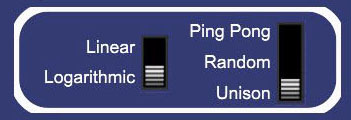
This last section contains two extra settings which affect how NymphCC operates.
Linear/Logarithmic – Determines the response of all the main sliders and rotary controls. Use logarithmic to have fine control over small values. You can safely switch between logarithmic and linear modes while editing a patch, the position of this switch is not stored as part of a preset.
Ping Pong/Random/Unison – Determines the note allocation algorithm employed when two Nymphes synths are connected to NymphCC at the same time. The Ping Pong and Random modes will send notes to only one synth at a time, therefore extending the effective polyphony of the Nymphes. The Unison mode sends notes to both synths simultaneously.